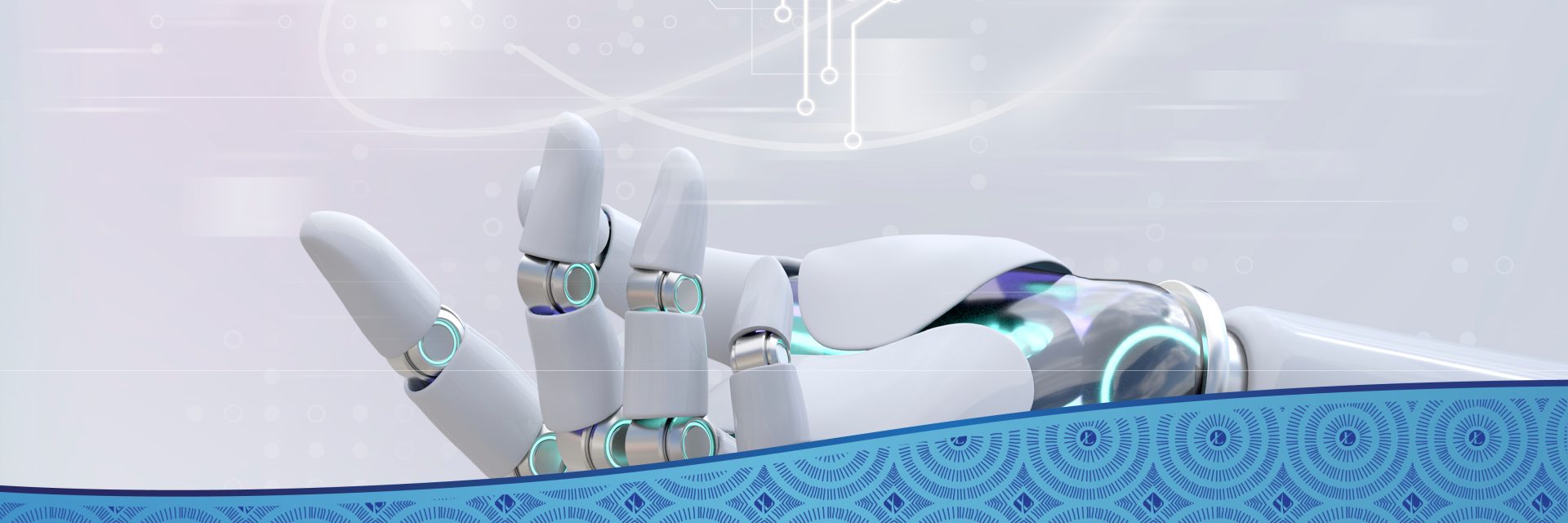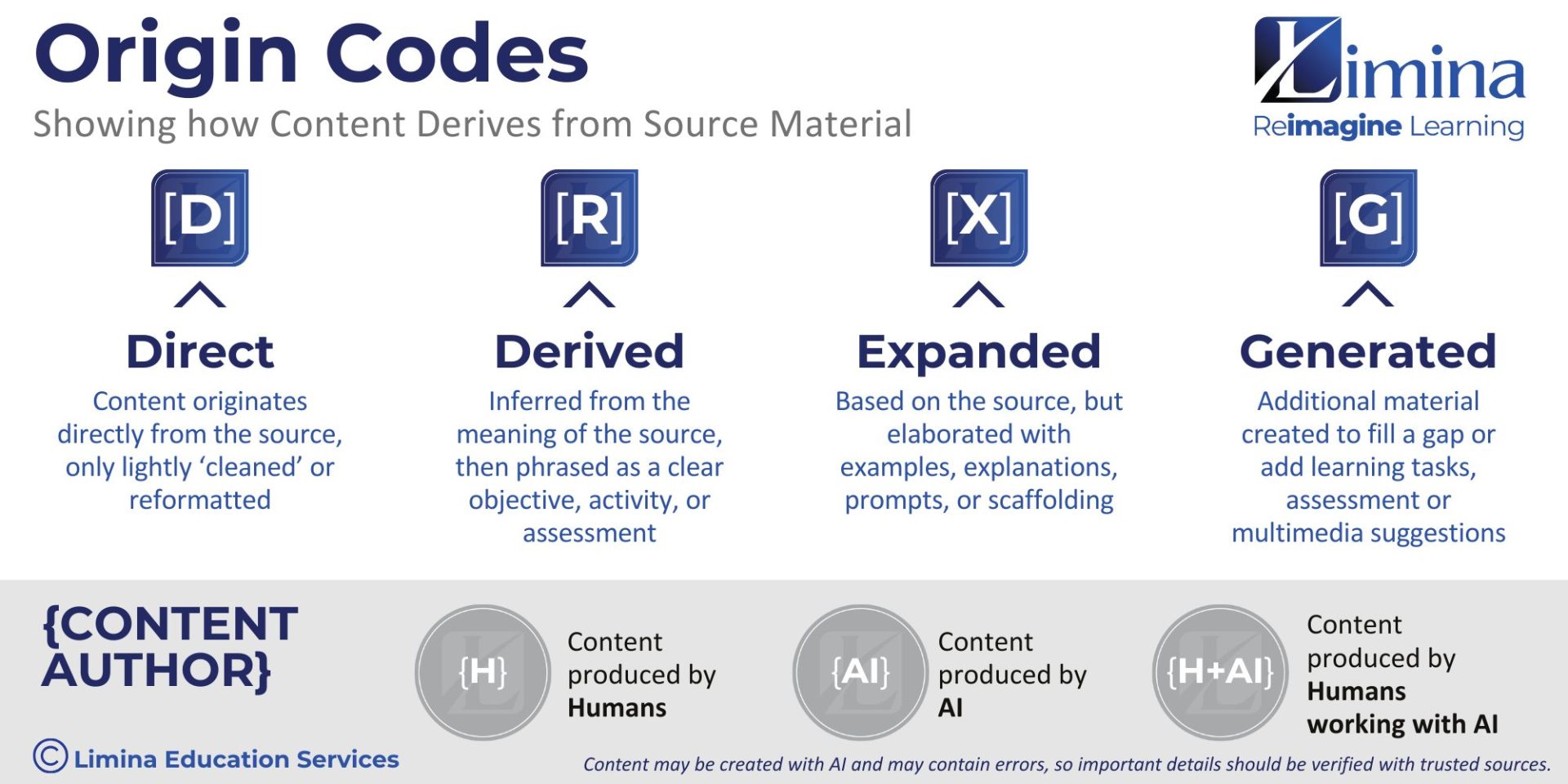
14 Oct Keeping Track of Content Adaptation in Learning Design: How Limina’s Origin Code Provides Transparency Across Human, AI, and Source Content
Keeping Track of Content Adaptation in Learning Design: How Limina’s Origin Code Provides Transparency Across Human, AI, and Source Content
Imagine this: you hand over a carefully vetted course to a learning design team to convert into an online package.
Your content has been quality-checked and screened multiple times, so you’re 100% sure of the course material. As you hand it over to the learning design team, you expect that they’ll treat the content with the same respect and that they won’t make changes that will affect the accuracy or meaning. You expect that changes will be flagged or that new content or inserts will be clearly shown.
Limina’s Learning Experience Design team takes this responsibility extremely seriously. That’s why we developed the Origin Code, a simple but powerful system that shows you exactly how content travels from source material to online learning, and who shaped it along the way.
Think of it as a “content map.” It tells you where ideas came from, how they were adapted, and whether they were created by humans, by AI, or by a combination of both.
Why This Matters
The way learning content is created is changing. AI tools are now part of everyday workflows, and while they can make processes faster and more efficient, they also raise questions:
- How much of this content was AI-generated?
- Did a human check, edit, or guide it?
- How closely does it stick to the original source material?
Our Origin Code answers these questions by giving you a clear record of the journey from source to final draft. For you, this means peace of mind: you know where your content sits, how it was shaped, and where our team added value.
The Two Layers of Transparency
The Origin Code system has two layers:
- Agent Codes – Who created it?
- Origin Codes – How was it adapted?
Together, they give you the full picture.
Layer One: The Agent Codes
The Agent Code tells you who (or what) shaped a piece of content.
- {H}: Written entirely by humans (Limina’s team members for example).
- {AI}: Created fully by AI without human shaping.
- {H+AI}: A collaboration of humans and AI working together from (for example, a human drafts while AI expands, or AI drafts while a human edits the content).
- {None}: Used when content is used directly from your source, unchanged except for formatting.
The agent code means you’ll never be left wondering whether content in your online course came from a person, AI, or a mix of both, or whether it was directly taken from your original content.
Layer Two: The Origin Code
We also provide a record of origin, showing how content was adapted.
The Origin Code shows the relationship between your source material and the final content.
- Direct [D]: Taken word-for-word (or very close), grammar or spelling mistakes were fixed, or it was reformatted.
- Derived [R]: Not written like the source, but clearly based on the source material, for example, rephrasing an introduction into learning objectives, a list of activities, or similar.
- Expanded [X]: Based on the source, but built out with examples, prompts, or explanations to make it richer.
- Generated [G]: Brand-new content added to fill a gap, such as a practice quiz, a description for an interactive infographic or a podcast script, correlated to the source material.
A Real-World Example
Let’s make this concrete. Let’s say your source document says: “Employees should follow the new data security protocol.”
Here’s how it might look once coded in our system:
- Direct [D]: “Follow the new data security protocol.” (a straight copy, lightly cleaned up)
- Derived [R]: “Explain why following the data security protocol is important.” (a learning goal, implied by your sentence)
- Expanded [X]: “Imagine a client’s file is left open on a shared drive. What could go wrong?” (an example to make the point more vivid)
- Generated [G]: “Take this quick quiz: match each situation to the correct step in the protocol.” (brand-new material created for practice)
Each origin code is paired with the appropriate agent code so you can see whether it was written by a human, created by AI, or shaped by both.
Why This Helps Our Clients
You might be wondering: why bother with all this coding? The answer is simple: clarity builds trust.
For our clients, this system delivers:
- Transparency: You can see exactly how your material was used, line by line.
- Confidence: You know where humans and AI played a role, and to what extent.
- Value: You can clearly see the creative steps our team adds, like examples, activities, or scaffolding, that make your content stronger.
- Control: You stay in the loop and in control of how your original content evolves.
It also helps in conversations with your stakeholders. If someone asks how much of the course is AI-generated, or whether the source material was followed closely, you’ll have a clear, straightforward answer.
Bringing It All Together
Limina’s origin code shows you exactly how content was adapted and/or generated from the original source material. It protects the integrity of your source material, shows the creative process behind our adaptations, and highlights the value we add.
Above all, it reflects our company values of trust, integrity and transparency and places these at the heart of our learning experience design process.
By Chantal Tarling


